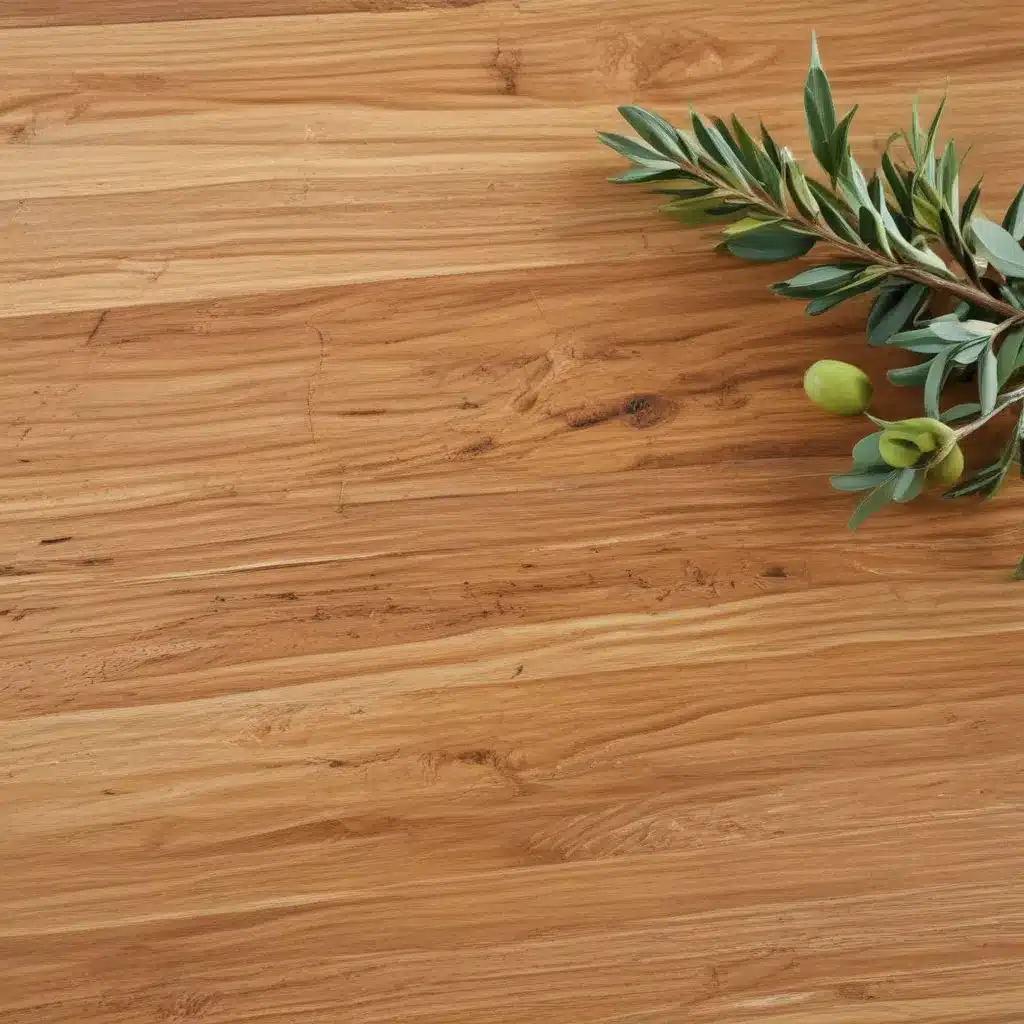The Unexpected Wood Revival
I’ll never forget the day I discovered the secret to reviving my old wooden furniture. It all started with a mishap in the kitchen – a wayward glass of water left a nasty white mark on my beloved oak dining table. As I frantically googled ways to fix it, I stumbled upon an unlikely hero: olive oil.
Now, I know what you’re thinking – olive oil on wood? Isn’t that a recipe for disaster? Well, my friend, let me tell you a tale that will have you rethinking everything you thought you knew about wood care.
The Accidental Discovery
It all began when I found an article on Minwax’s blog detailing how to remove water marks from wood finishes. The author, Bruce, shared his method of using a combination of Minwax Wipe-On Poly, steel wool, and elbow grease to buff out the offending mark. As I read through the step-by-step instructions, something caught my eye – the mention of using olive oil as a home remedy.
Skeptical, yet intrigued, I decided to give it a try. I gathered my supplies, including a bottle of high-quality extra virgin olive oil, and got to work. To my utter amazement, the olive oil not only removed the water mark, but it also breathed new life into the entire tabletop. The wood positively glowed with a rich, warm patina that I hadn’t seen in years.
The Olive Oil Transformation
As I stood back and admired my handiwork, I couldn’t help but wonder, “Why haven’t I been using olive oil on my wood all along?” The answer, it turns out, lies in the unique properties of this humble kitchen staple.
Olive oil is a natural wood conditioner, penetrating deep into the grain to nourish and revitalize the wood fibers. Unlike harsh chemical cleaners or synthetic polishes, olive oil gently moisturizes the wood, restoring its natural luster and protecting it from drying out and cracking over time.
But the benefits don’t stop there. Olive oil also acts as a mild abrasive, helping to smooth out minor scratches and imperfections in the wood’s surface. And let’s not forget the delightful aroma – your furniture will be infused with the crisp, earthy scent of freshly pressed olives, adding a touch of Mediterranean charm to any room.
The Olive Oil Wood Care Routine
Now, you might be wondering, “But won’t the olive oil go rancid?” That’s a valid concern, but with a little bit of care and attention, you can easily avoid any unsavory surprises.
The key is to use a small amount of oil and wipe away any excess. As the redditor mentioned, it’s important to thoroughly clean the wood before applying the oil, to ensure maximum absorption and prevent any sticky residue.
I like to follow a simple routine: first, I gently buff the wood with a soft cloth to remove any dust or grime. Then, I pour a tiny amount of olive oil onto a clean rag and work it into the wood, focusing on any areas that look dry or dull. After a few minutes, I wipe away any remaining oil, leaving behind a smooth, revitalized surface.
The Olive Oil Advantage
Compared to traditional wood care products, olive oil offers a host of advantages. It’s all-natural, environmentally friendly, and incredibly affordable – you likely have a bottle in your pantry right now. Plus, it’s incredibly versatile, working wonders on everything from antique furniture to modern decor.
But perhaps the best part is the sense of accomplishment you’ll feel when you see the transformation. Bringing new life to old, neglected wood is incredibly satisfying, and it’s all thanks to the unassuming power of olive oil.
So, the next time you’re browsing the aisles of your local hardware store, skip the expensive wood polishes and head straight for the kitchen. Your furniture will thank you, and your wallet will, too. And who knows – you might just discover a newfound appreciation for the humble olive oil, just like I did.
Remember, you can find more information and resources on wood care and restoration at Adam Cleaning, your go-to source for all things home improvement in Nottingham, UK. Happy wood reviving!







